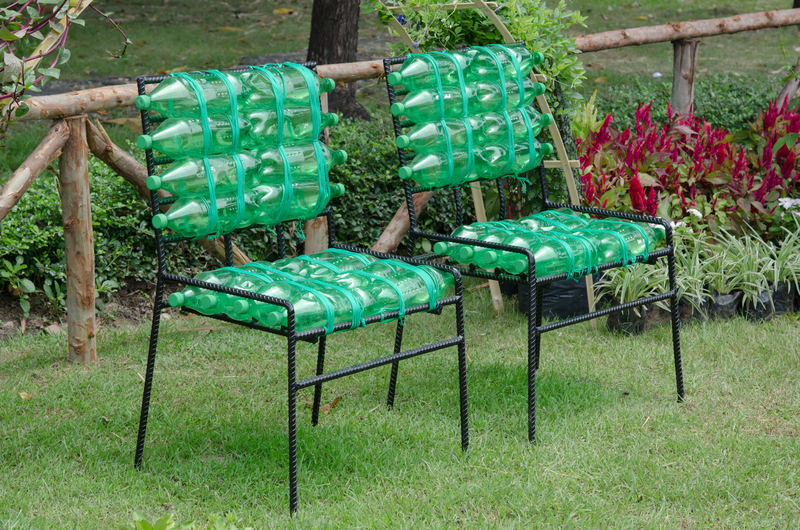Innovative Ways to Slash Your Plastic Consumption
In today's world, plastic consumption has become one of the most pressing environmental challenges. Every year, millions of tons of plastic waste end up in oceans, landfills, and waterways, posing a threat to wildlife and human health. Understanding the gravity of plastic pollution, many individuals and businesses are seeking innovative methods to reduce their dependency on plastic. This article will introduce creative and practical solutions for reducing your plastic use, ensuring a greener and more sustainable planet for future generations.

Why Is It Important to Reduce Plastic Consumption?
Before diving into innovative ways to cut down on plastic, let's examine why minimizing plastic usage is so essential. Here are some reasons:
- Environmental Impact: Most plastics are non-biodegradable, leading to pollution and threats to wildlife.
- Human Health Risks: Chemicals in plastics can leach into food and beverages, posing health hazards.
- Resource Conservation: Reducing plastic usage saves raw materials and lessens energy consumption in production.
Creative Alternatives to Single-Use Plastics
1. Swap Plastic Bottles for Reusable Containers
One of the most common sources of plastic waste is single-use bottles. Try replacing them with:
- Stainless steel water bottles that keep drinks hot or cold
- Glass bottles for fresh juices and smoothies
- BPA-free reusable plastic bottles for lightweight carry
By making this simple switch, you'll significantly slash your plastic consumption and save money over time.
2. Choose Bulk and Package-Free Shopping
Supermarkets are notorious for excessive plastic packaging. Instead:
- Shop at local markets where produce and grains are sold loose
- Bring your own containers or bags for meat, grains, and snacks
- Support zero-waste stores that encourage you to fill your own jars and bags
3. Use Innovative Alternatives for Food Storage
Traditional plastic wraps can be replaced with sustainable options:
- Beeswax wraps for sandwiches, cheese, and fruit
- Silicone lids and bags for leftovers and freezer storage
- Recycled glass or metal containers for meal prep and storage
4. Rethink Takeout and Delivery Habits
Consuming takeout often leads to a pile-up of plastic cutlery and containers. Innovate your dining experience by:
- Bringing your own containers when picking up food
- Requesting no plastic cutlery or straws in your order
- Encouraging local restaurants to use compostable or reusable packaging
Advanced Solutions and Technologies to Reduce Plastic Use
1. Explore Bioplastics and Eco-Friendly Materials
Recent advancements have led to the development of biodegradable plastics made from plant-based materials. Consider:
- PLA (Polylactic Acid) containers made from corn starch
- PHA plastics derived from plant oils and waste
- Paper-based packaging that's compostable and recyclable
Switching to these options in your daily life greatly reduces your reliance on conventional plastics.
2. Adopt Smart Appliances and Technology
Modern homes are harnessing smart solutions to cut down on plastic use:
- Water filters: Install a high-quality filter to eliminate the need for bottled water
- Soda or seltzer makers: Create fizzy drinks at home, skipping single-use bottles
- Reusable coffee pods: Avoid plastic capsules and reduce waste
3. Support Innovative Recycling Programs
While recycling is not a complete solution, it's still crucial. Engage with new forms of recycling:
- Deposit and return schemes that incentivize reusing containers
- Community-led recycling drives for hard-to-recycle plastics
- Plastic-to-fuel and upcycling initiatives that give new life to old materials
Easy Swaps to Minimize Plastic in Everyday Life
1. Opt for Natural Fibers and Materials
Many household items contain hidden plastics. Make these simple swaps:
- Bamboo toothbrushes instead of plastic ones
- Natural loofahs and sponges instead of synthetic versions
- Wooden clothes pegs over plastic clips
2. Rethink Personal Care Products
Bathroom shelves are often cluttered with plastic bottles and tubes. Try these alternatives:
- Shampoo and conditioner bars that come packaged in paper
- Refillable deodorant sticks and toothpaste tablets
- Buy in bulk or choose brands with a take-back scheme
3. Make Your Cleaning Routine Greener
Household cleaning supplies often come in single-use plastic bottles. Consider:
- Concentrated cleaning tablets that dissolve in water at home
- Reusable cleaning cloths instead of disposable wipes
- DIY cleaners with simple ingredients like vinegar and baking soda
Sustainable Fashion: Dressing with Less Plastic
The clothing industry is a significant source of microplastic pollution due to synthetic fibers. To slash your plastic footprint:
- Choose natural fibers like organic cotton, linen, and bamboo
- Avoid fast fashion and invest in quality, long-lasting items
- Wash clothes with a microfiber catcher to prevent plastic shedding
How Businesses and Communities Can Reduce Plastic Consumption
While individual actions are vital, systemic change can accelerate the plastic reduction revolution. Here's how organizations can lead the way:
- Implement return and reuse programs: Encourage bring-back schemes for packaging
- Switch to compostable or recycled packaging in food and retail sectors
- Run awareness campaigns to educate consumers and employees on sustainable practices
- Incentivize bulk purchasing and reusable container systems
- Collaborate with local governments to implement bans on single-use plastics
Embracing a Plastic-Free Lifestyle: Tips for Success
- Start small: Tackle one habit at a time, such as no plastic straws or bags
- Plan ahead: Carry your own shopping bags, bottles, and containers
- Choose quality over quantity: Invest in items that last
- Community matters: Join local zero-waste groups for support and inspiration
- Celebrate progress: Share tips and successes with friends and family
Addressing Common Obstacles
Reducing plastic isn't always easy. Here are solutions to common barriers:
- Cost concerns: While reusable items may cost more upfront, they pay for themselves over time
- Convenience: By planning and making plastic-free items available, habits shift smoothly
- Accessibility: Support businesses and policies making plastic-free options widely available

Conclusion: Small Changes, Big Impact
It's clear that slashing your plastic consumption is vital for the health of our planet and future generations. Thanks to a wealth of innovative strategies and resources, everyone can make a difference. From swapping out single-use bottles to supporting bulk shopping and bioplastics, the choices are diverse and effective.
Remember, every step counts. Whether you're an individual, business, or community leader, adopting these creative, practical, and forward-thinking solutions can turn the tide on plastic pollution. The time to act is now - for a cleaner, safer, and more sustainable world.